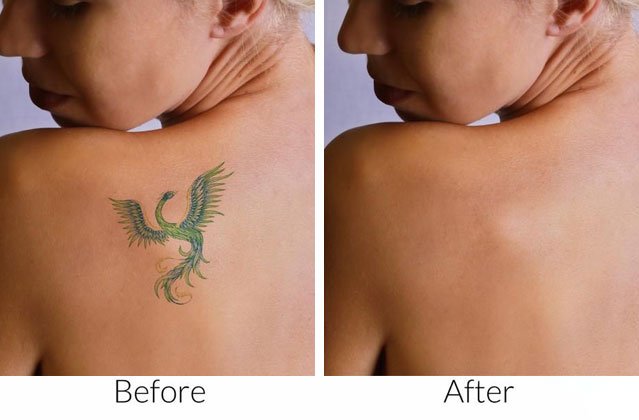Aesthetic Dermatology

Botox
Botox injections are shots that use a toxin called botulinum toxin to relax a muscle. These shots are often used to smooth wrinkles on the face, thereby treating crows feet and frown lines. It is minimally invasive. It is a safe and effective treatment.
Fillers
Many visible signs of aging can be traced back to volume or tissue loss. As facial tissues thin out, lines become prominent around the nose and mouth, and cheeks look a little hollow. Dermal fillers can replace lost volume to help smoothen wrinkles, plump the lips, and restore a more youthful appearance.


Tattoo removal
Laser tattoo removal is the most common method used to remove or lighten tattoos. The laser light energy shatters the tattoo ink into small particles, which the body’s immune system clears over time.
The type of laser used to remove a tattoo depends on the tattoo’s colors. Because different colors of ink absorb different wavelengths of light, multi-colored tattoos may require the use of multiple lasers. Laser tattoo removal requires multiple treatments with a few weeks in between procedures to give the skin time to heal. The length and number of treatments depends on several factors, including the size of the tattoo and the colors used.
Semi-Permanent makeup
Semi-Permanent makeup, also known as Microblading or Micropigmentation, is a revolutionary technique that uses tattoo ink to enhance lips and create fuller eyebrows and eyelids. It is a perfect solution for those who want a natural-looking permanent makeup solution with minimum downtime and want to enhance their appearance permanently.


Vitiligo surgeries
Surgical methods for treatment of vitiligo becomes important in cases where medical therapy fails to cause repigmentation or in cases of segmental vitiligo where the response to surgery is excellent. The basic principle of surgical treatment is autologous grafting of viable melanocytes from pigmented donor skin to recipient vitiliginous areas. Various grafting methods have been described including tissue grafts and cellular grafts. Stability of the disease for atleast a year is the most important criterion to obtain a successful outcome.

Chemical Peel
A chemical peel is a procedure in which a chemical solution is applied to the skin to exfoliate the superficial layers. With a light or medium peel, you may need to undergo the procedure more than once to get the desired results.
Chemical peels are used to treat melasma, acne, wrinkles, discolored skin and scars. They can be done alone or combined with other cosmetic procedures.
Acne scar surgeries
Acne scars can be classified into three different types: atrophic, hypertrophic, or keloidal. Atrophic acne scars are the most common type. The most basic and practical system divides atrophic acne scars into three main types: ice pick, rolling, and boxcar scars. A number of treatments are available to reduce the appearance of scars.
Treatment of acne scars must be individually directed for each patient depending on the types of scars present. Chemical peeling, dermabrasion, laser therapy, punch techniques, fat transplantation, subcision, and combined therapy are the various choices available for treating acne scars.


Radiofrequency Ablation
Radiofrequency ablation uses high-frequency electrical currents to precisely remove skin lesions like skin tags, warts, and moles. This non-invasive method targets and removes lesions selectively, minimizes scarring and damage to surrounding healthy skin for better aesthetic outcomes.
Laser Hair Reduction
Laser hair reduction is a medical procedure that uses a concentrated beam of light (laser) to remove unwanted hair.
During laser hair removal, a laser emits a light that is absorbed by the pigment (melanin) in the hair. The light energy is converted to heat, which damages the hair follicles. This damage inhibits or delays future hair growth. Multiple sessions are needed to achieve best results.


Hydrafacial
The HydraFacial involves the use of a “medical-grade hydradermabrasion device that carries out a patented three-part regimen – cleansing, exfoliating, and then infusing skin with intensive serums. There is no downtime (recovery time) – and the entire treatment can be done in as little as 30 minutes.
PRP and GFC
PRP and GFC treatments have emerged as two popular tissue repair and regeneration options in regenerative medicine. Dermatologists mostly recommend either of these two treatments for hair growth and skin rejuvenation. While PRP stands for Platelet-Rich Plasma, GFC stands for Growth Factor Concentrate. Multiple sessions are needed to achieve best results.

